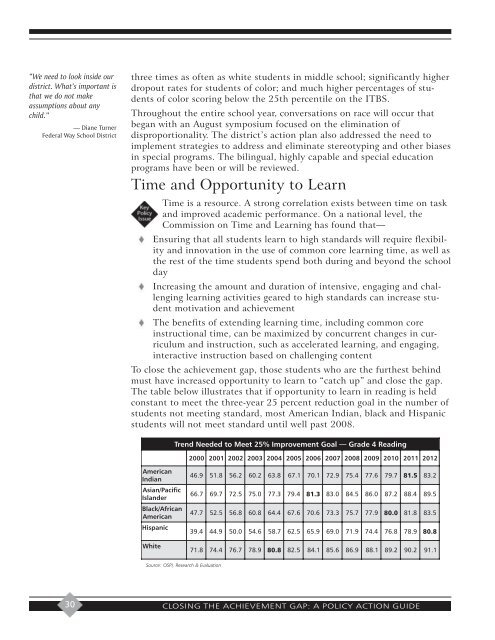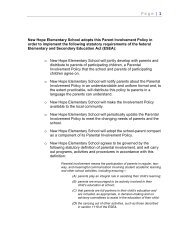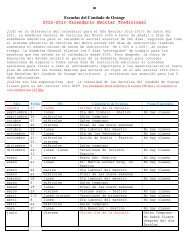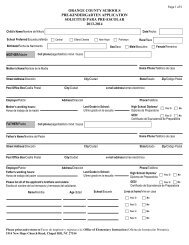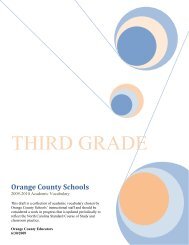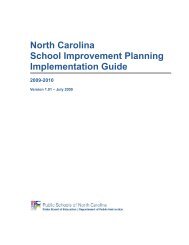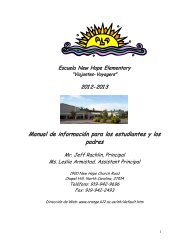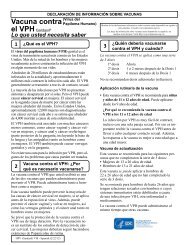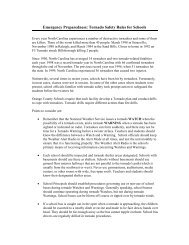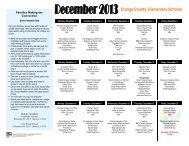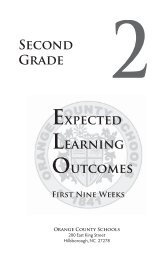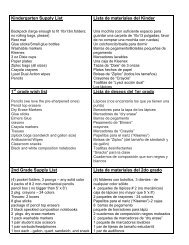Closing the Achievement Gap - Washington State School Directors ...
Closing the Achievement Gap - Washington State School Directors ...
Closing the Achievement Gap - Washington State School Directors ...
Create successful ePaper yourself
Turn your PDF publications into a flip-book with our unique Google optimized e-Paper software.
“We need to look inside ourdistrict. What’s important isthat we do not makeassumptions about anychild.”— Diane TurnerFederal Way <strong>School</strong> Districtthree times as often as white students in middle school; significantly higherdropout rates for students of color; and much higher percentages of studentsof color scoring below <strong>the</strong> 25th percentile on <strong>the</strong> ITBS.Throughout <strong>the</strong> entire school year, conversations on race will occur thatbegan with an August symposium focused on <strong>the</strong> elimination ofdisproportionality. The district’s action plan also addressed <strong>the</strong> need toimplement strategies to address and eliminate stereotyping and o<strong>the</strong>r biasesin special programs. The bilingual, highly capable and special educationprograms have been or will be reviewed.Time and Opportunity to LearnTime is a resource. A strong correlation exists between time on taskand improved academic performance. On a national level, <strong>the</strong>Commission on Time and Learning has found that—Ensuring that all students learn to high standards will require flexibilityand innovation in <strong>the</strong> use of common core learning time, as well as<strong>the</strong> rest of <strong>the</strong> time students spend both during and beyond <strong>the</strong> schooldayIncreasing <strong>the</strong> amount and duration of intensive, engaging and challenginglearning activities geared to high standards can increase studentmotivation and achievementThe benefits of extending learning time, including common coreinstructional time, can be maximized by concurrent changes in curriculumand instruction, such as accelerated learning, and engaging,interactive instruction based on challenging contentTo close <strong>the</strong> achievement gap, those students who are <strong>the</strong> fur<strong>the</strong>st behindmust have increased opportunity to learn to “catch up” and close <strong>the</strong> gap.The table below illustrates that if opportunity to learn in reading is heldconstant to meet <strong>the</strong> three-year 25 percent reduction goal in <strong>the</strong> number ofstudents not meeting standard, most American Indian, black and Hispanicstudents will not meet standard until well past 2008.Trend Needed to Meet 25% Improvement Goal — Grade 4 Reading2000200120022003200420052006200720082009201020112012AmericanIndianAsian/PacificIslanderBlack/AfricanAmericanHispanicWhite46.951.8 56.2 60.2 63.8 67.1 70.1 72.9 75.4 77.6 79.7 81.5 83. 266.769.7 72.5 75.0 77.3 79.4 81.3 83.0 84.5 86.0 87.2 88.4 89. 547.752.5 56.8 60.8 64.4 67.6 70.6 73.3 75.7 77.9 80.0 81.8 83. 539.444.9 50.0 54.6 58.7 62.5 65.9 69.0 71.9 74.4 76.8 78.9 80. 871.874.4 76.7 78.9 80.8 82.5 84.1 85.6 86.9 88.1 89.2 90.2 91. 1Source: OSPI, Research & Evaluation30CLOSING THE ACHIEVEMENT GAP: A POLICY ACTION GUIDE


